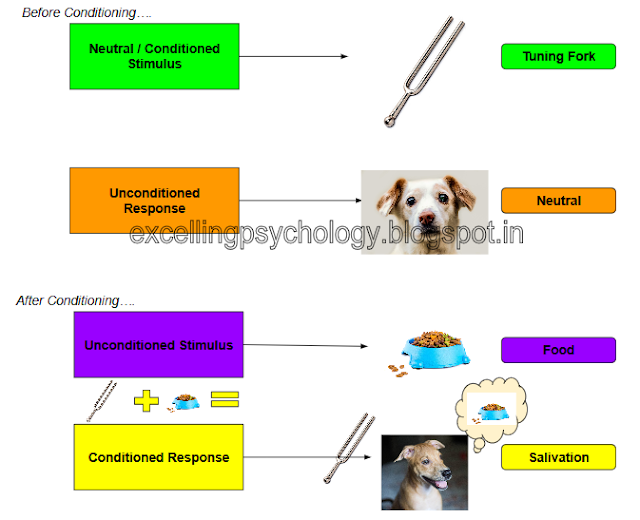Dealing with Research Studies at the IGCSE A level
You can get an understanding of what role research studies play in the IGCSE A level in my earlier post. I am writing this post to illustrate what I meant by a 'complete synopsis.'
Psychology and abnormality is a popular A level option, and looking at the A level syllabus, the first study the student comes across is 'Freeman, 2008,' under the subtopic 'symptom assessment using virtual reality.' The original paper for the study is available in the public domain here. A look at that five-page paper, and I am sure that even the AS level champion is left confused with what from that entirety is relevant to his/her syllabus. That is why, a complete synopsis is key, not for quick learning but for relevant, adaptive learning. Besides the student has developed a certain method of looking at studies at the AS level, which now needs to be dropped, and a new method of looking at studies needs to be learnt.
This new method is best understood if the type of questions presented in papers 3 and 4 are kept in mind. A question-answer format works well to understand the important aspects of a study. Let's take a look at the Freeman, 2008 paper from an A level perspective.
Examples of paper 3 questions from the Freeman (2008) study are as follows:
- What did Freeman (2008) mean by 'symptom assessment using virtual reality'?
- Freeman (2008) looked into the effectiveness of interactive computer environments in identifying the symptoms of schizophrenia and helping in the treatment of these symptoms.
- Describe the uses of virtual reality for psychosis as outlined by Freeman (2008)?
- Freeman (2008) listed several uses for virtual reality (VR) in the diagnosis and treatment of psychosis. Some of the prominent ones of these are as follows:
- Symptom Assessment - Symptom assessment of psychosis through questionnaires and interviews by human assessors always leaves the possibility that the paranoia expressed by the psychotic patients has some reflection of reality. Presentation of a neutral-looking situation of assessment through VR eliminates this problem, as the assessors are only virtual avatars, and any paranoia expressed towards them is definitely unfounded.
- Establishing Symptom Correlates - Physiological responses of patients can be easily recorded in a VR situation as the patient is already dealing with computerized equipment. Thus, eye-tracking, measurement of blood pressure, heart rate, etc. can be taken of the psychotic patients to analyze the symptoms of the patients.
- Identification of Predictive Variables - Studies using VR have identified factors that can predict whether psychotic patients will interpret a particular controlled environment as threatening (known as persecutory ideation). For example, research has found that high levels of anxiety, worry, misperceptions and cognitive inflexibility are all psychological predictors of persecutory ideation. Similarly, physiological predictive variables can also be investigated.
- Identification of Differential Predictors - Psychotic disorders consist of multiple symptoms, each distinct from the other. Factors that can differentiate between these symptoms are useful to predict exactly which symptom may be seen in a psychotic patient as a result of certain experiences. For example, in the present study, the authors found that depression and worry are associated with social anxiety and paranoia whereas perceptual anomalies increase the risk of paranoia but decrease the risk of social anxiety.
Examples of paper 4 questions from the Freeman (2008) study are as follows:
(*Questions in section A and B are indirectly related to the original studies. Hence, I will take them up in a separate post altogether. Questions in section C demand direct linkage to the study, and hence, I have taken an example here.)
- 'Characteristics of psychological disorders are best measured through direct observation.' To what extent do you agree with this statement? Use examples of research you have studied to support your answer.
(After giving an introduction, the candidate can write the following:)
For example, in an investigation of symptom assessment using virtual reality in the case of psychosis by Freeman (2008), it was argued that the use of questionnaires and interviews cannot eliminate the possibility that the paranoia of a psychotic patient is grounded in reality. The researchers showed through their study that a simulated environment can help researchers verify that the paranoia displayed by the psychotic is unfounded. In the study, Freeman directly observed the responses of psychotic patient to a controlled virtual avatar, assuring him that any response of paranoia on part of the schizophrenic could not have been prompted by the avatar.
(The candidate can then continue with examples from other studies of the syllabus)
Thus, the key to preparing actual research studies at the A-level is taking a frame of reference corresponding to the demands of the two examination papers, which requires understanding a complete description of the study, as well as its design.


Comments
Post a Comment
I would love to have your feedback or suggestions, or answer any of your queries. Feel free to express yourself below. I will get back to you as soon as possible.